
Femina Ridens (aka The Laughing Woman, The Frightened Woman) is a 1969 Italian psychological drama, starring Philippe Leroy and Dagmar Lassander, and directed by Piero Schivazappa. IMDB
Dr. Sayer kidnaps Maria, a young woman, and locks her in his prison-like apartment, saying he will psychologically torture her into loving him, then kill her. Maria, however, is much more than she appears.
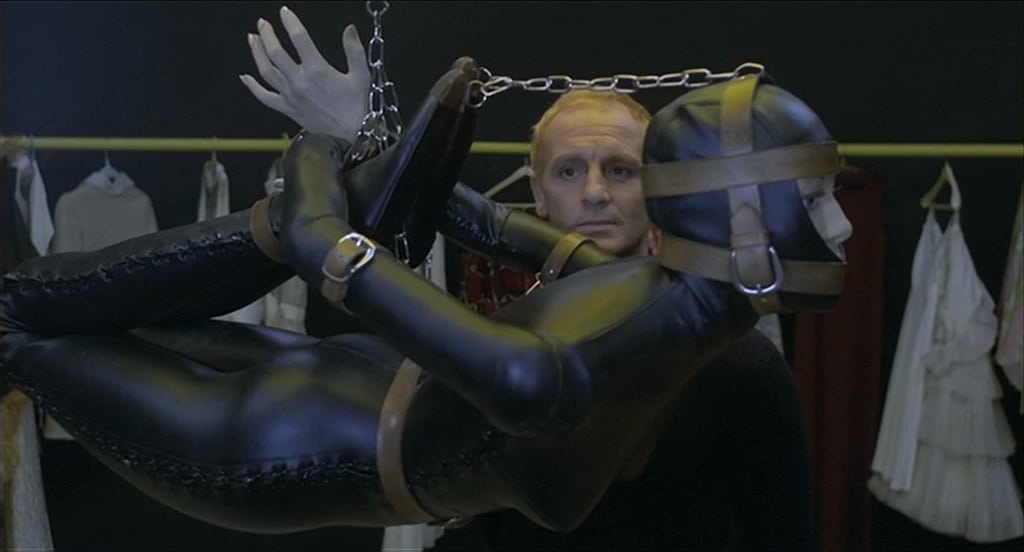
The first image in this film is dozens of men in suits, all lined up before a giant sculpture of a woman’s lower body, facing the oval-shaped doorway with jagged teeth.
This is immediately followed by a man writing a check for a sex worker, who covers up bruises on her legs, saying, “You really hurt me this time.” She takes the check and agrees to meet him again next week. (She keeps her pen in her fur-covered purse. This film might have been co-written by Sigmund Freud.)
In the lavish offices of a charitable organization, Dr. Sayer argues with Maria, a journalist, about mass sterilization of men in India. He considers this an affront to the potency of the male. He invites her to his house to get some documents for her report.
At Sayer’s place, he shows Maria his collection of antique daggers, drugs her, and drives her to another house. This is the beginning of the physical and psychological torture he inflicts on her, while ranting about how she and all other women are insane and want to rule the world. His misogynist ramblings about women becoming self-sufficient and collecting sperm from the most desirable men sound unpleasantly close to modern incel rhetoric.
Sayer’s house/prison is a marvel of mid-century Mod design. The strangeness of the setting helps moderate the torture scenes somewhat. Some of them go on a little too long to be dismissed as camp.
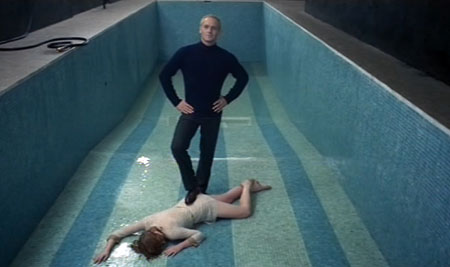
Sayer’s theory is that if he exerts total control over Maria, she will naturally fall in love with him. He also believe that through his own mental discipline, he will not fall in love with her, and he will thus have “won”. Maria counters this by flattering him with the idea that if he’s so great, he should be able to seduce women without kidnapping and imprisoning them.
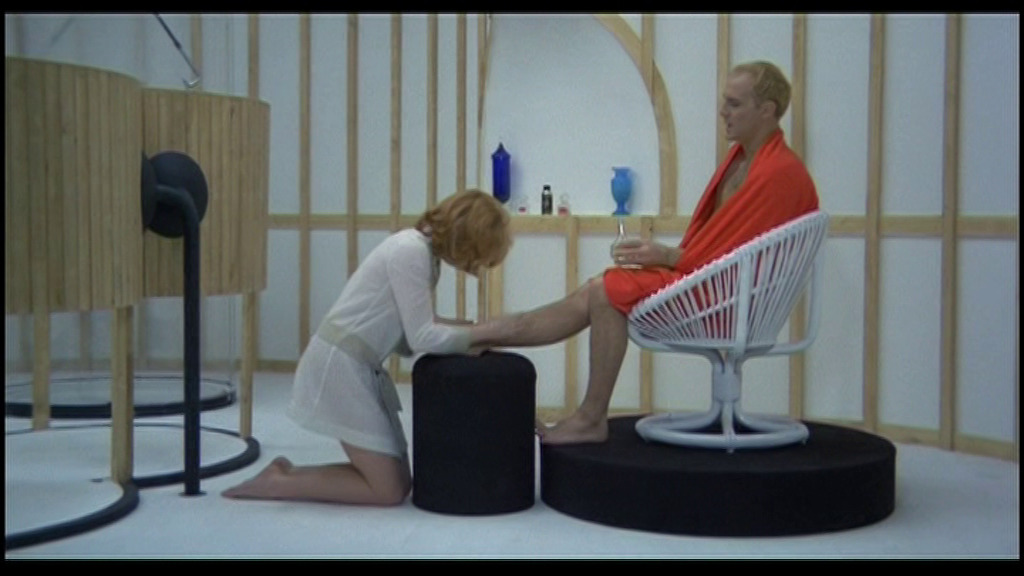
It becomes increasingly clear that Sayer has a deep-seated fear of women, and all of his systems of surveillance and confinement are massive over-compensations. This is, after all, a man who has an anatomically correct mannequin of himself, and forces Maria to make love to it while he watches.
When Sayer cuts some of Maria’s hair off, he almost stabs her with the scissors, but stops. When he raises the wall that divides his room from hers, he sees she has taken an overdose of his heart medication, despite being handcuffed. Panicked, he uncuffs her and struggles to keep her alive. He rubs her feet, in a reversal of their previous positions.
When Maria asks why Sayer didn’t let her die, he admits to her that he has never killed anybody. The pictures he showed her were staged with sex workers as models, and they’re all alive. Sayer: “I normally spend the weekend with them. They help me iron the quirks out of my nervous system.” Maria was the first woman he really kidnapped, and now he doesn’t want to kill her.
Sayer and Maria leave the claustrophobic world of his apartment and go for a drive in the beautiful Italian countryside, goofing around like they’re new lovers. The “male gaze” is reversed as Sayer gives Maria his camera, and she takes pictures of him posing. She winds Sayer up but denies him consummation.
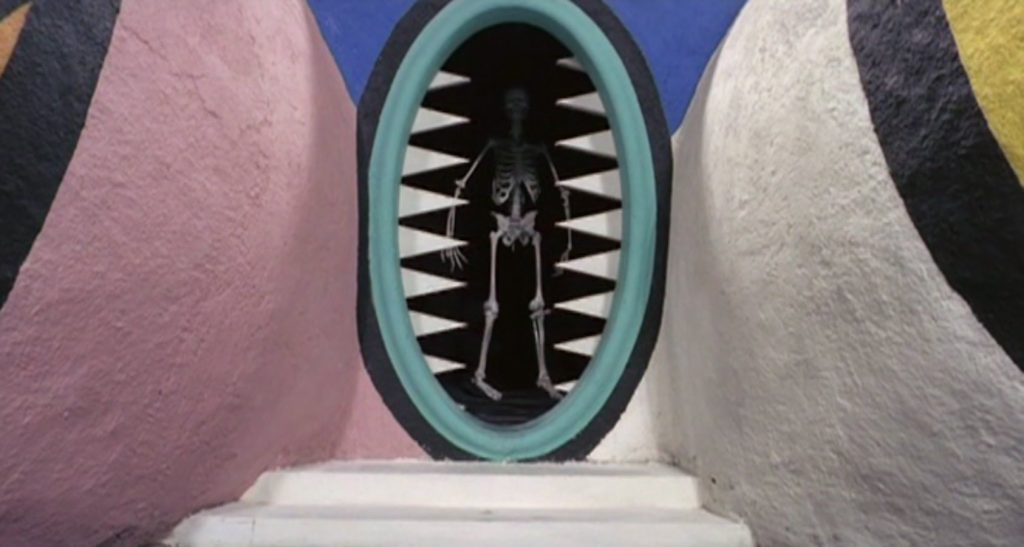
Back at his house, Maria entices him into the deep end of his swimming pool. This is when he visualizes being consumed by the giant vagina-dentata sculpture, leaving nothing but his skeleton, but he goes ahead. Sexual intercourse, the moment of (re) contact with the womb, is when Sayer dies.
With Sayer dead, Maria reveals that she faked her suicide attempt, and casually leaves his house. We see that she was working with the sex worker, and knew everything about Sayer, including his heart defect, and had every move planned out. After Maria pays the sex worker, she counsels her to fight back and dominate other men.
She goes to her own lavish mansion, complete with butler, and puts a picture of Sayer in an album next to portraits of other powerful men. Presumably she has killed them too.
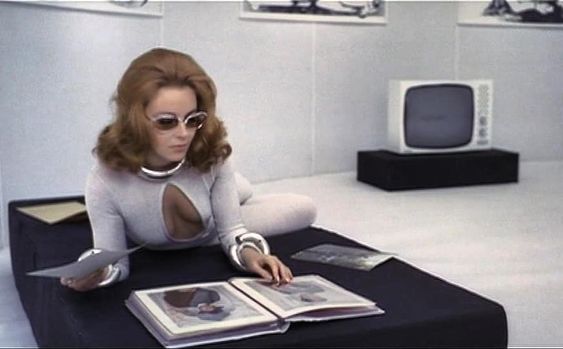
Stories like this, in the “deadlier of the species” sub-genre, can be read as female resistance to male power. Yet, because the woman triumphs through emotional and sexual manipulation, and the man is revealed as only a paper tiger, it paradoxically validates Sayer’s misogyny.
I think this film, among others, is influenced by the 1965 British film The Collector.



